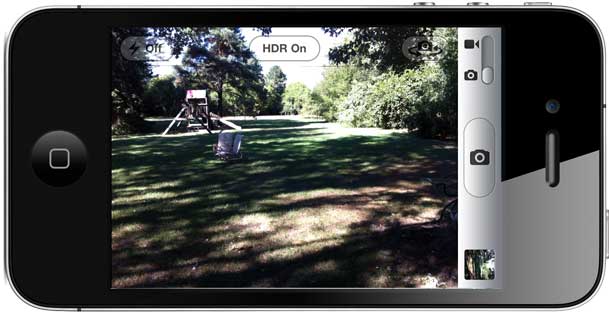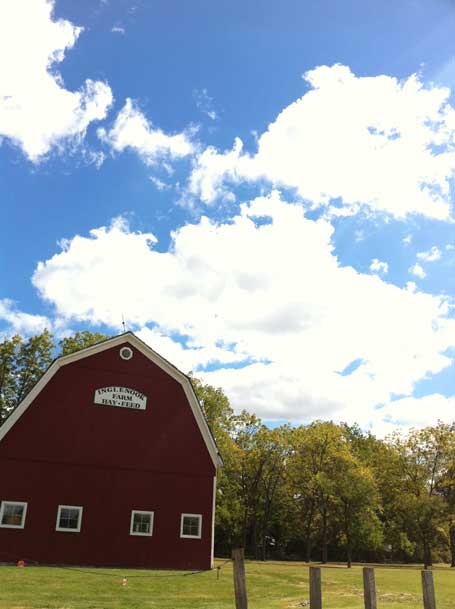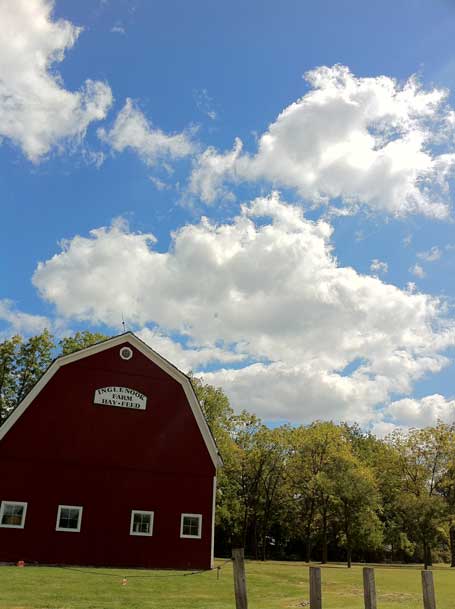
Yep, I'm back on my "point and shoot cameras are dying" rant again. You might remember this post where I talked about camera phones being the "new point and shoot cameras" and I gave my reasons as to why I felt this way then. As I stated in the earlier post, when it's important I shoot it with my DSLR. However, when it's just about capturing the moment and for fun I'm going to pull out my smartphone and take the shot. Before you argue with me, let me state the obvious: yes point and shoot cameras offer better optics and higher megapixels. They also offer a wider range of features for controlling the shot as well as the higher end models even offering RAW capabilities. Yep, I get it! They are technically better "cameras". No question. However, whenever there's an exciting moment unfolding at a public event I see 10 times more camera phones go up in the air than I do dedicated point and shoot cameras. The reasons for this are numerous. The most common ones are: people don't want to carry multiple devices and probably the biggest reason is that the camera phone shot is "good enough" for the average person. Beyond those reasons I think a bigger reason is that the camera phone and especially the smartphone offer instant sharing of those pics AND in device image editing!
iOS 4.1 Brings One Button HDR (high dynamic range) shooting to the iPhone 4
When I saw this feature come out in the latest update to the iPhone's operating system (iOS 4.1), I had an immediate "Duh" moment! Apple once again took something that is so obvious and added a "one button" interface to it. Professional Photographers have been shooting HDR images for years now. It has actually become a "creative" effect in photography. However, pros have to do this in a multiple step fashion that involves setting their camera up a certain way (bracketed exposures) and combining the multiple shots in post using software like Photoshop CS5 (Merge to HDR Pro). in its simplest form HDR is ability to combine multiple exposures into one high dynamic range image that achieves the best exposure for highlights, shadows and midtones. This is where the amateur photographer often fails. The shots that come from these low end cameras and camera phones often over expose one area or under expose another. Since there aren't very many if any manual controls on these devices you're usually stuck with what the device thinks you should have. So Apple took HDR and brought it to the masses in a seamless way. Just turn it on before you take the shot! With an iPhone 4 running iOS 4.1 you have the option to turn on HDR. Once it's on you aim at your subject and press the onscreen shutter button. The iPhone 4 then captures 3 images in rapid succession instantly with no lag, one under exposed, one over exposed and one in the middle and combines them together AUTOMATICALLY as an HDR shot. There is no user interaction required. Of course pros will want control. They'll want to tweak things an get the image just right and I applaud you for that. However, this feature isn't aimed at pros! This is aimed at everyone else so that right out the camera they can get better exposures.
For example…
The iOS 4.1 update gives you the option of keeping both shots. So here's the original shot BEFORE HDR.

Here's the HDR version (again, all automatic and with no adjustments on my part)

Is it perfect? No! I'd still like to see a little more light in the shadows of the barn. Is it better than what we were getting from these low end cameras? ABSOLUTELY!
Get HDR on the iPhone 3GS too
If your iPhone model doesn't support the iOS 4.1 HDR feature, you can still have HDR because there's an App for that. Before iPhone 4 and iOS 4.1 supported this feature natively, I was using the Pro HDR App to do the same thing. Of course it takes more steps, but it get's the job done. You can get Pro HDR for the iPhone 3GS and iPhone 4 for $1.99 here from the 
Camera Manufacturers: Step Your Game Up!
There is absolutely NO REASON that this kind of feature shouldn't be on every point and shoot camera sold today. Yes, I applaud Canon for adding an HDR mode to the NEW G12 – way to go!
The lack of it (one button HDR), built-in wifi, built-in GPS/geotagging, etc. on the vast majority of P&S cameras continues to further my argument that point and shoot cameras are dead! Hell I'd like to see some of these features make it on to DSLRs too. Now I know I'm dreaming….


Can’t agree with you more, no longer will I take my point and shoot on holidays, my iPhone is all I need.
NO, NO, NO.
While everyone thinks HDR is amazing, it takes away from learning how to work a camera PROPERLY. A phone NEEDS to have a basic camera because those are not necessarily people that are into photography, but I think that cameras themselves need to retain their current form.
Photography has become bloated with people who think their photographers just because they have a Canon PowerShot or Nikon Coolpix, they take just about every shot and add a simple Photoshop ActionScript and call it done. It’s not even interesting most of the time.
Do you REALLY want the next reknowned photographer to be someone that just uses a point-and-shoot? Do you really want to hire a photographer who has a GREAT portfolio, but hasn’t a clue how to work a camera?
Think about it. I have heard about studios hiring photographers after seeing their work, but then finding out that those were the only decent pictures out of the 100,000 they shot. I heard about someone actually getting sued because of that too.
I don’t think we need to be worrying about fancy features on point-and-shoots, they’re cheap because they don’t have many features but the basics, and teachers like that. The students LEARN how to use A camera and not THE camera.
@Jessica – You do realize that all professional photographers shoot a lot more images than they show, right? It doesn’t take a rocket scientist to figure out that not every shot is going to be a good one.
Heck – my partner is a photographer, and she shoots tens to hundreds of images that she doesn’t show – and she knows how to use cameras.
I myself was a minor in photography, and I shoot at least 5-20 images for every good one – and i know how to use a camera.
I agree – the field has become bloated with people that don’t know what they are doing – but the clincher here is that they don’t understand concept and composition, not that they don’t understand the camera. I’m sorry – but if the images are good, I don’t care if you knew to use a light meter and set the camera’s aperture and shutter to the most ideal settings for the light level. I don’t care if you shoot on P. I don’t care if the camera does the work for you. If you understand how to lay a shot out, align the camera and take a picture that looks good – that is all that matters. It is the end, not the means that matter. This is true for ALL art (excepting process art, which is completely about the means, but that is another topic altogether)
Really, by your logic, we should avoid pre-made cameras of any kind, and make our own sensors, camera box, lenses, this, in order to learn what the process is all about.
Wait, no, we should go way back to film cameras, making our own film too.
Terry, I have a question (I’ll respond to Jessica’s errors in the next comment). Are there any point and shoot cameras with: 1) built in HDR; 2) built in location tagging; 3) decent low-light performance? Thanks.
Patrick, no and that’s my point. The Nikon P6000 did have Geotagging. However, the P7000 seems to have removed it, but it does have low light performance and HD movie recording. The Canon G12 adds HDR. So no one P&S seems to have it all.
Jessica, I have come to a completely different conclusion than you. Why? Technology is a tool that replaces human effort. You think that’s bad, I think that’s good.
A few quick examples:
1. When the Macintosh came out in 1984/1985, there was a reaction to the ability to use multiple typefaces. The reaction was exactly the same as yours above – this won’t work because people need to learn typography over the course of many years to be qualified to select the correct typeface.
2. The switch to digital photography – film photographers were generally dismissive of digital not that many years ago. Why? Partly because digital does not have the development process, so digital photographers did not have to learn how to chemically develop, rinse, and stop their pictures and so would not know how to take pictures correctly.
When professional-grade tools are within everyone’s reach, then expertise, creativity, vision and hard work are the only things that matter. Soon after the iPhone 4 came out, someone did a commercial shot entirely with the iPhone 4. It looked great. It probably would have looked even better shot with a RED camera, but point is that these new tools are good enough that they are enormously disruptive to the way we’ve thought about various professions and creative processes. I think that’s a good thing.
Jessica, the purpose of a camera is NOT to make you learn photography, preferably in a quick, effective manner.
It is a tool to take photos. The better the tool, the more I like it.
If you want to learn photography (and few people REALLY do), I would not recommend a phone or a point & shoot.
Advertising has always convinced some people that the camera makes the photographer.
Why should cameras need to ‘retain their current form’?
Did you buy alot of gear and are now stuck on making photographs in a particular way?
Do you “think” you’re a photographer because you have fancy gear?
“Do you REALLY want the next reknowned photographer to be someone that just uses a point-and-shoot?”
Wait … so if someone doesn’t know how to use a View Camera or a Medium Format camera … does that make them any less of a Photographer? Should we all go back to the Camera Obscura? The View Camera? 110 Instamatics? Wait … do we all need to go back to Brownie Box Cameras? Ohhh … maybe we should go back to painting emulsions on glass plates and developing them in toxic and caustic chemicals?
Technology allows people to make the best image with what they have available.
The tool isn’t the message.
The medium is the message.
I completely agree. I recently took a trip to Michigan’s upper peninsula and forgot to bring my Canon Powershot. I did, however, have my iPhone 4 and the pictures it captured were great. They were, for the most part, just as good as my Canon would have taken (other than indoor shots needing a flash, still a weak point even with the LED flash on the iPhone). The combination of quality and convenience has me thinking I may never bother bringing a point & shoot camera again.
It reminds me of the MP3 versus CD debate. Yes, CDs sound better on good equipment, but MP3s are generally good enough and the convenience can’t be beat.
I wish Apple would make a waterproof version of the iPhone. That way I wouldn’t need to carry a point and shoot camera that’s waterproof (Panasonic Lumix DMC-TS1), or a waterproof pocket camcorder (Kodak Zx3) when I go on vacation.
Terry, I’m excited to hear that iOS 4.1 has added one button HDR to the iPhone 4 (just wish it were time for me to upgrade so I could have one!). Your HDR image is far superior to the original shot. Look at the definition in the clouds! That’s impressive. I use my iPhone 3GS camera almost daily and in the most amazing ways. But the greatest benefit for me is that, as you pointed out, I can email or text a photo to someone else instantly.
The Pentax K7 DSLR has in-camera HDR and it boggles my mind that most cameras don’t.
Props to Apple for raisong the bar. Now we just have to wait for everyone else to follow.
I love my HDR camera on my iPhone 4. I wish their was a way to switch of the normal picture mode…I just want HDR pictures now haha. Please check out http://www.mintuz.co.uk for the latest iPhone news.
I was shooting today at the Baldwin Hills Scenic Overlook near Culver City, CA and this annoying HDR kept coming up. Then, I started to get excited. Leo Laport recently interviewed a guy who wanted you to buy all this software to do HDR. When it dawned on me that now I have it in the iPhone I got excited. Just to make sure I stopped by your blog and I want to thank you for confirming that this really was what it was, and that the reason I had not noticed before was because of the system upgrade Thanks, Terry! I knew I could count on you!
As an experiment, capture an image in very low light conditions and you can prove that the iPhone 4 only captures one image when in “HDR” mode. The software will than produce a pseudo “HDR” from the RAW data. This is probably why Apple only shows the “HDR” image and ONE unprocessed image.
The noise levels in the shadows are often quite high but the results are ok. Good on Apple for releasing this. It is only a small matter of time before Nikon and Canon will add similar features. The only difference will be that the quality will be much, much higher.
As a variation when shooting, try exposures from bright areas and then dark areas when shooting in “HDR” mode. The resulting “HDR” can give the shooter interesting variables as you would expect.
By using the iPhone to capture 3 or more images at different exposures and then process them in any good “HDR” Application, the results are generally much better with a lot less noise. Only to be expected.